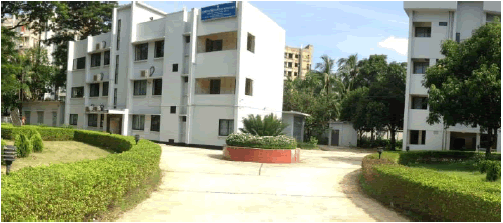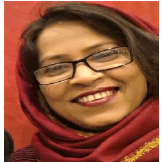Indexed In
- RefSeek
- Hamdard University
- EBSCO A-Z
- OCLC- WorldCat
- SWB online catalog
- Publons
- International committee of medical journals editors (ICMJE)
- Geneva Foundation for Medical Education and Research
Useful Links
Share This Page
Open Access Journals
- Agri and Aquaculture
- Biochemistry
- Bioinformatics & Systems Biology
- Business & Management
- Chemistry
- Clinical Sciences
- Engineering
- Food & Nutrition
- General Science
- Genetics & Molecular Biology
- Immunology & Microbiology
- Medical Sciences
- Neuroscience & Psychology
- Nursing & Health Care
- Pharmaceutical Sciences
Value Added Abstract - (2020) Volume 0, Issue 0
Radionuclide Imaging in Cerebral Stroke: Experience in Bangladesh
Nasreen Sultana1*, Hiroshi Matsuda2, Azmal Kabir Sarker3 and Md. Bashir42Integrative Brain Imaging Center, National Center of Neurology and Psychiatry, Japan
3Institute of Nuclear Medicine and Allied Sciences, Bangladesh
4Central Medical Colleges, Bangladesh
Published: 16-Sep-2020
Abstract
Stroke and cerebrovascular diseases are major causes of mortality, morbidity, and disability. Stroke is the third leading cause of death in Bangladesh. The World Health Organization ranks Bangladesh's mortality rate due to stroke as number 84 in the world. Rehabilitation services have not yet been integrated into the Bangladesh health system. Nuclear medicine imaging can play an important role in the diagnosis of stroke risk, the differential diagnosis of vascular and parenchymal cerebral abnormalities, and the understanding and management of post-stroke recovery. Nuclear Medicine, primarily via tomographic methods, has made substantial contributions to the considerate of the hemodynamic and metabolic significances of cerebrovascular diseases. Many of the pathophysiologic processes and consequences that follow stroke, including completed infarct core, adjacent penumbra, and diaschisis, have been investigated with Nuclear Medicine, and stroke outcome may be related to these phenomena. Several techniques, including vasodilatory stress imaging with regional cerebral blood flow (rCBF) single-photon emission computed tomography (SPECT), oxygen extraction methods with positron emission tomography (PET), and spectroscopic imaging with magnetic resonance spectroscopic imaging, offer ways to distinguish vascular from parenchymal dysfunction and to determine whether any observed abnormalities in cerebral blood flow are primary for secondary disease manifestations. Here we want to share our experiences regarding clinically diagnosed stroke with nuclear imaging at our institution.

Biography:
Nasreen Sultana completed her Medical graduation in 1993 from Chittagong University and post graduate course 'Doctor of Medicine' in Nuclear Medicine from BSM Medical University, Bangladesh in 2005. She got trained in Advanced Vascular Imaging in 2005 from Thomas Jefferson University and
Research Institute, Venezuela under WFUMB fellowship. She has been serving as a physician specialist in ultrasound imaging, nuclear imaging and radionuclide therapy at National Institute of Nuclear Medicine and Allied sciences (NINMAS) since 2006. Her scientific papers were awarded by ARCCNM in 2004, 2006 and 2009.

Speaker Publications:
1. New PFJ, Scott WR, Schnur JA, et al: “Computerized axial tomography with the EMI scanner”. Radiology 110:109-123, 1974.
2. Paxton R, Ambrose J: “The EMI scanner. A brief review of the first 650 patients”. Br J Radiol 47:530-565, 1974.
3 Baker HL Jr, Campbell JK, Houser OD, et al: “Computer assisted tomography of the head. An early evaluation”. Mayo din Proc 49:17-27 (Jan) 1974.
4 Davis DO, Pressman BD: “Computerized tomography of the brain”. Radiol Clin North Am 12:297-313 (Aug) 1974.
10th International Conference on Neurological disorders & Stroke; Webinar-August 21-22, 2020.
Abstract Citation:
Nasreen Sultana, Radionuclide imaging in cerebral stroke: Experience in Bangladesh, Stroke Congress 2020, 10th International Conference on Neurological disorders & Stroke Webinar- August 21-22, 2020.

